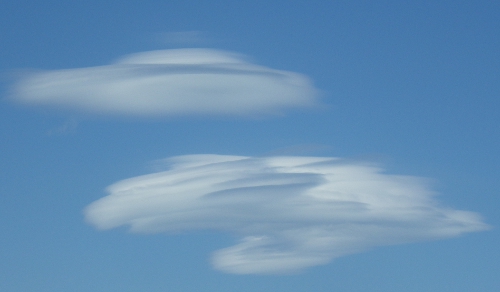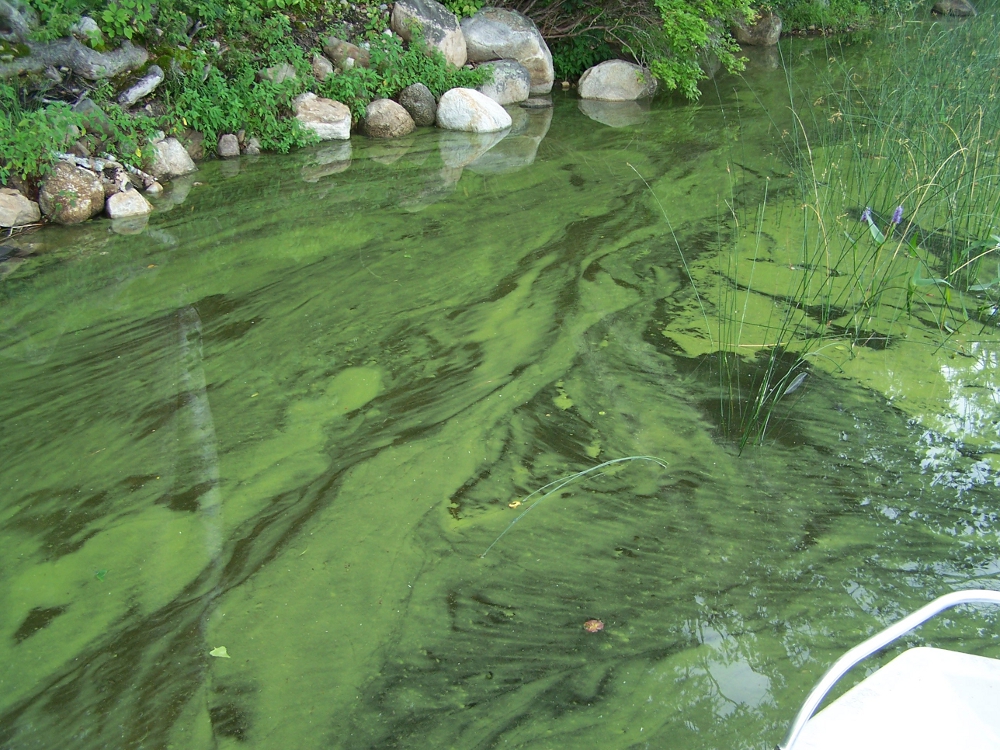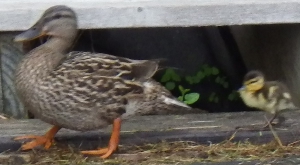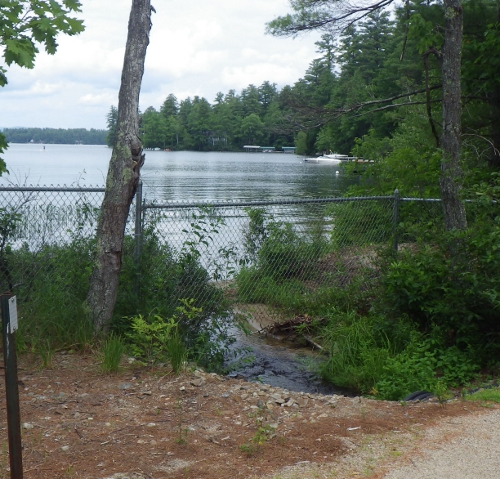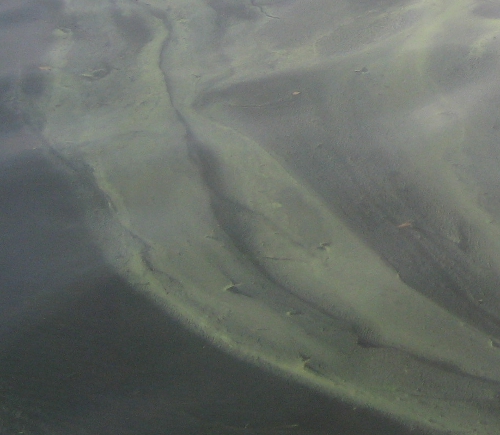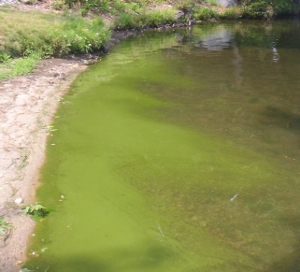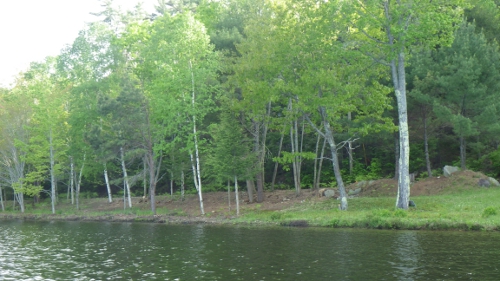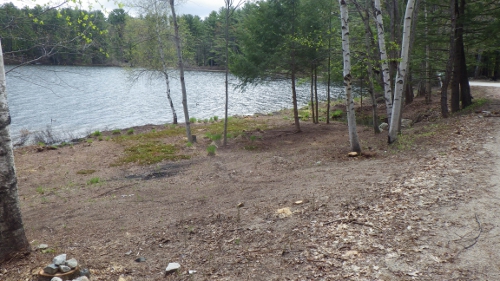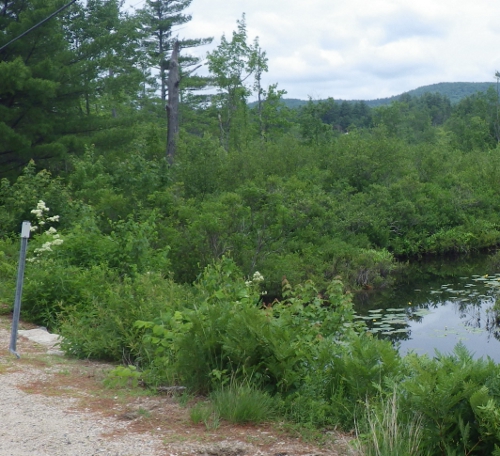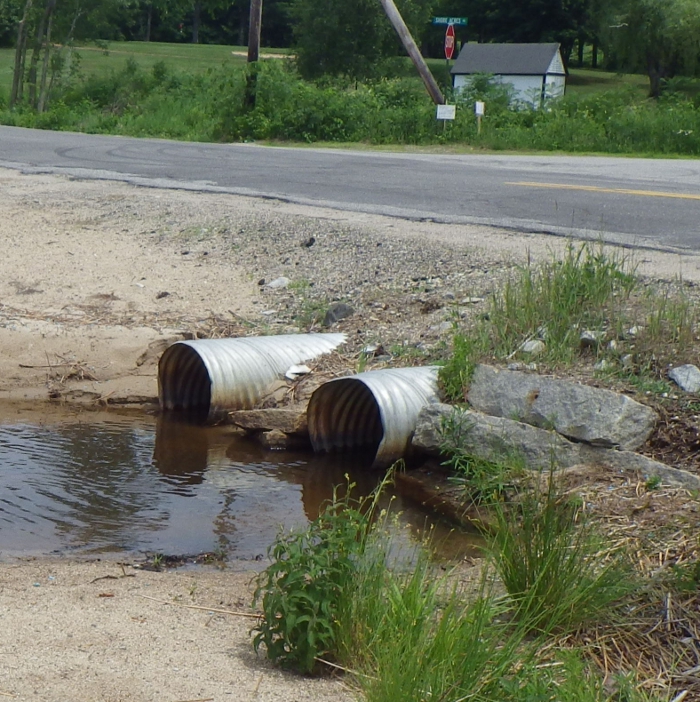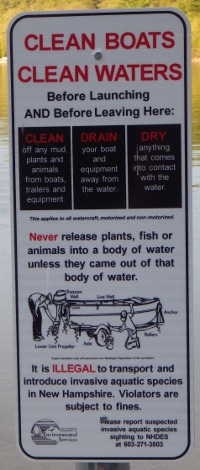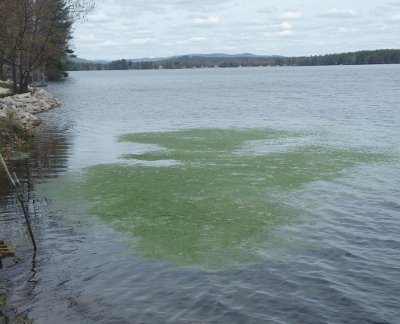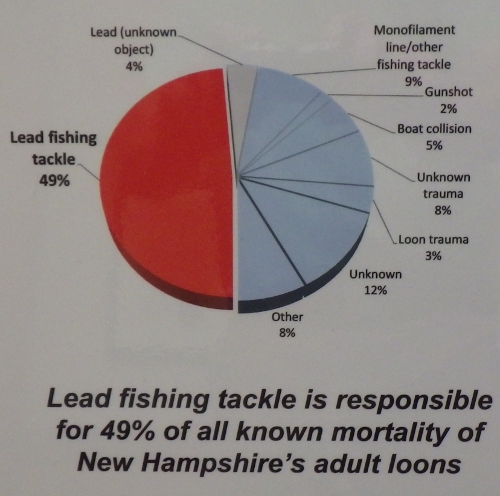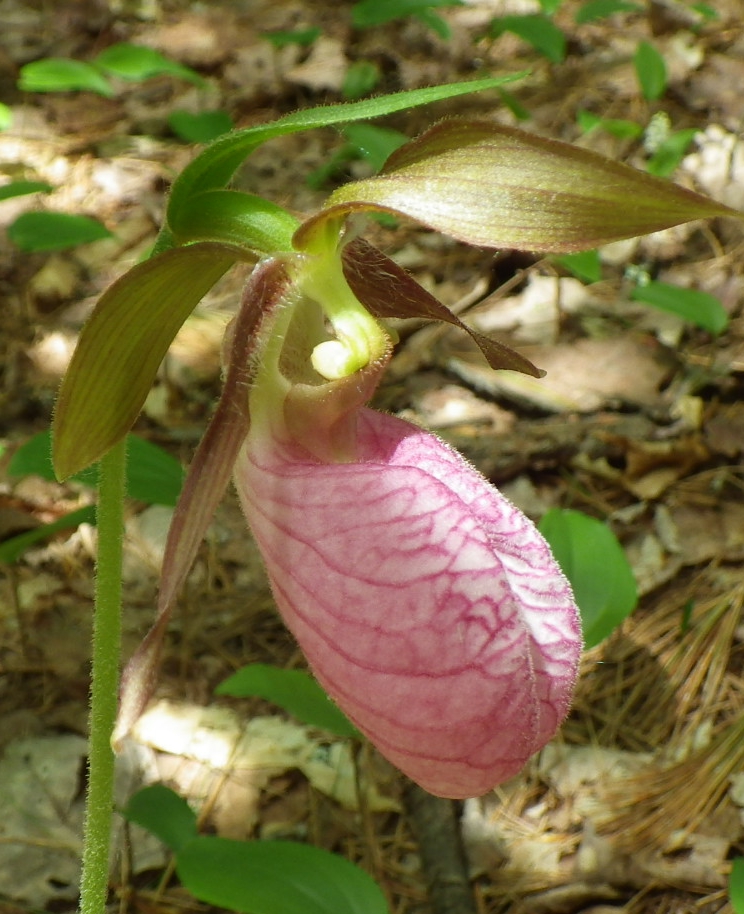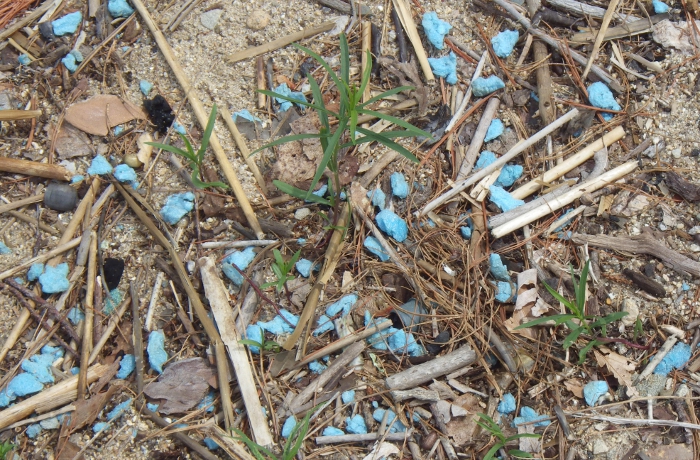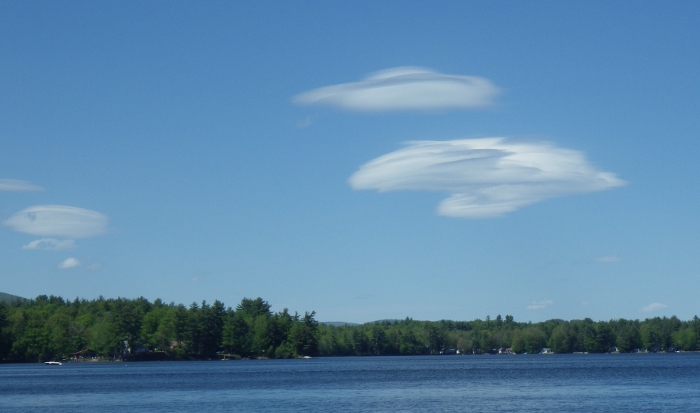Water Quality Monitoring of Province Lake
Effingham & Wakefield, New Hampshire, and Parsonsfield, Maine
2016 Report - Published Online on July 18, 2017
2016 was the 26th consecutive year of water quality monitoring conducted at Province Lake. The first 23 years of monitoring were conducted as part of the New Hampshire Volunteer Lake Assessment Program (VLAP). In 2014, the Province Lake Association (PLA) switched to the University of New Hampshire (UNH) Lakes Lay Monitoring Program (LLMP). While making this change had multiple benefits, the downside is that the 23-year continuous record of consistent analyses by VLAP has been broken, so data are not always comparable. See the 2015 report for details of the impact.
The deep spot was sampled 5 times (June through September) in 2016, once fewer than in 2015. The standard inlets and lake outlet were sampled 6 or 7 times (April through August for all inlets until the flow ran out, also September for the outlet). Several other places were sampled 1 to 3 times.
I obtained the 2016 data for analysis directly from Bob Craycraft of UNH Cooperative Extension. Since they end up sending the data to DES for their Environmental Monitoring Database (EMD), all data are therefore public information. In order to compare 2016 UNH results to prior years, only the June through September data (summer season) were used in this report.
Many of the terms in this report include hyperlinks to related web sites. By clicking on most of the underlined terms, you can access additional information. If the same word is hyperlinked more than once, the different occurrences lead to different web sites. Clicking on most photos will get you a large photo with wider angle and higher resolution. To get back to the report from a photo, click the back arrow on your browser or [ALT]+[←] on your keyboard. The same copyright applies to these photos.
Use this menu to jump to a particular topic:
Overall Summary
- Water transparency was the best on record in 26 years.
- We had no reportable cyanobacteria blooms in 2014 through 2016, after having had them 4 years in a row (2010-2013).
WARNING: Since Province Lake has a history of cyanobacteria blooms of varying severity, it is advisable to have a look at the water each time you or your children plan to swim. We've been lucky lately, but caution is always advisable. Since a cyanobacteria bloom is readily visible, if you don't see it, swimming is safe. - Average phosphorus concentrations in the upper layers of the lake fell to approximately the long-term average. Chlorophyll-a rose somewhat to be slightly below the 26-year average.
- The surface layers of the lake were NOT acidic (pH's were >7.0) for the first time recorded during the 26 years of monitoring. This is good.
- When the latest (2016) watershed report card
was compared to the previous (2014) report card, an insignificant tweak in alkalinity status was the only change noted.
(1). The good news is that the E. coli bacteria parameter remains at the best rating, "2-G", which means that the boating
use rating also remains at "2-G". However, Province Lake remains rated "5-M", "Marginally Impaired" for swimming, only because of the history of cyanobacteria
blooms, not for E. coli. Read what "impaired" means.
Since 2010, Province Lake has been listed as "Marginally Impaired" in the "Aquatic life" use category for chlorophyll-a and total phosphorus. By 2008, the lake had already been so listed for pH and mercury in fish. On the 2014 list for "Drinking water after adequate treatment", Province Lake still received the "2-G" rating.
Details
This section provides a more detailed look at the UNH LLMP water quality data for Province Lake for June through September 2016. Data from the excluded months is outside of the peak growing season, so is not typical.
1. Water transparency (a measure of how deep you can see into the water) was an average of 3.12 meters (10.2 feet), a significant increase of nearly 15 inches from the prior year (2015). It is the best transparency on record in 26 years of data. I am reporting the transparency that is measured without a viewscope because it represents how most people actually observe the lake. The viewscope method represents how you would see the lake through a diving mask or swim goggles. For comparison, the average 2016 viewscope transparency was 3.42 meters (11.2 feet).
For the first time on record, Province Lake's average transparency was almost as good as the statewide median of 3.2 meters (10.5 feet), without a viewscope. We have a shallow lake, so sediments are easily stirred up, therefore this was quite extraordinary. The deepest part of the lake is only 16 to 17 feet deep, as shown on the NEW bathymetric chart.
2. Chlorophyll-a concentrations are used to indicate the average amount of algae (2) in the lake. The 2016 chlorophyll-a concentrations averaged 3.60 micrograms per liter (ug/L), only the 16th highest in 26 years, about 5% below the 26-year mean average.
This places our 2016 average concentration at only 79% of the average amount that New Hampshire lakes had. Happily, Province Lake has been below the current NH median chlorophyll-a of 4.58 ug/L since 2005 and has only exceeded it 4 times in 26 years. A low level is good because dying algae forms the brown floating bottom masses in July and August. The algae masses settle loosely on the bottom when the lake is still and cloud the water when wind or boat wakes stir things up. This may be unsightly, but it is not harmful to anyone or their animals.3. Phosphorus is a nutrient required for photosynthesizing organism growth and is typically thought to be the nutrient whose availability most limits plant, algae, and cyanobacteria growth in NH lakes. In 2016, the average phosphorus levels in the upper water layer (sampled at 2.0 meters depth) were about 4% below the 26-year mean average, a decrease of 18% below the previous year, equaling the 2014 levels. The 2016 level exceeds that in 50% of the lakes in NH, as it usually has.
The total phosphorus concentrations over the years have been high enough to earn Province Lake a "Marginal Impairment" listing in the "Aquatic life" use category, ever since NH DES started issuing listings of impairments for phosphorus and chlorophyll-a in 2010, as explained in 2013's Issue #5 of the Province Lake Water Newsletter.
In the lower water layer (sampled at 4.0 meters depth), the average phosphorus levels were 14% higher than those at 2.0 meters, although 6% lower than the previous year, but still the 6th highest among 16 years of data since those measurements started in the year 2000.
The phosphorus concentration at the Rt. 153 Inlet (in NH, near the state line) continues to be elevated, with its 2016 level slightly higher than the previous year, making it the highest average concentration since 2011. Even so, this was the 13th lowest in 26 years, so still about average and probably a matter of natural variation. The average phosphorus concentrations measured at the Island Inlet on Bonnyman Road showed an 8% increase over 2015, making it the highest average concentration since 2010, but still the 10th lowest in 26 years, so not of great concern. Phosphorus clings to sediments, so soil erosion and sediment disturbance can increase phosphorus concentrations. Both inlet locations have a history of elevated and fluctuating total phosphorus concentration. The lake view at the Island Inlet is shown here. Click the photo to see where the sample is taken.
It is important to educate lake users on the importance of operating jet skis and boats at slow speeds in shallow areas to minimize disturbance to sediments and vegetation. Churning up the bottom sediments releases phosphorus, which promotes plant, algae, and cyanobacteria growth; increases turbidity (scattering of light by suspended particles), and decreases clarity.
4. We had never sampled Province Lake for nitrogen as part of VLAP, but it is now included in the new UNH Lakes Lay Monitoring Program. A 1987 DES Lake Assessment Program survey had concluded that plant and algae growth in Province Lake is actually limited by the amount of nitrogen, rather than by phosphorus. Now that nitrogen is being monitored, we have the potential to eventually learn if that is true. At least 10 years of data are required before a meaningful statistical analysis can be performed. Meanwhile, it is important to be sure nitrogen-containing fertilizers are not used near the shoreline, or streams or ditches feeding the lake, and to be sure septic systems are operating properly. It would also be a tiny help not to pee in the lake while swimming; each time adds about 40 milligrams of nitrogen to the water.
If you have a lush, bright green lawn, it could be a sign to your neighbors and the community that you are fertilizing your lawn, possibly making a significant contribution of nitrogen and/or phosphorus to the lake. On the other hand, if you pump water directly out of the lake to irrigate your lawn, you can contribute to improving the lake water quality by removing nutrients from the water and putting them to use on your lawn; I have been told that some people actually do this here.
5. Province Lake experienced its first confirmed cyanobacteria bloom since the 1970's in September 2010, then had blooms 4 years in a row (2010-2013). Fortunately, no sightings worthy of a Lake Warning have occurred since 2013. The blooms this decade mean we are susceptible to having them in future years, especially in late summer, when at least 3 of the past blooms occurred. When a cyanobacteria bloom is in progress (see description below), there is no way for us to know if it is toxic or not, so we need to act as if it is toxic. Therefore, it is important to know what a bloom looks like and act accordingly. If a cyanobacteria bloom is suspected, there may be Facebook postings and/or email alerts issued.
What a Cyanobacteria Bloom Looks Like: Large concentrations of cyanobacteria (a bloom) would be seen as a green, blue, or pink surface scum in a section of the lake. This is different from the tan or yellowish foam seen sometimes after strong winds. If present in large amounts, cyanobacteria can be toxic to animals and humans. While recreational exposure to cyanobacteria toxins is a major concern of NH DES, there have been no documented cases of cyanotoxin-related illnesses in New Hampshire. Photo by NH DES, courtesy of the PLA, 2012.
If you think you are seeing a cyanobacteria bloom, stay out of the water and especially, keep your children and pets out of the water. Call the NH DES Cyanobacteria Hotline at (603) 848-8094 (NEW number this year) or email beaches@des.nh.gov to describe what you see. Click HERE to download the NH DES cyanobacteria flyer for more info. If suspicious, during "swim season" NH DES may sample and analyze the suspected bloom, then post a Lake Warning if there is any danger. They will monitor the situation and remove the postings when all is clear.
The best ways to avoid having cyanobacteria blooms are by eliminating fertilizer use on lawns, keeping the lake shore natural (unlike the photos shown here), protecting against shoreline erosion, and properly maintaining septic systems. The specific causes of our blooms is unknown, but preventing future blooms is a major goal of the Watershed Management Plan.
6. A pH between 6.5 to 7.0 is ideal for fish. pH is the measure of acidity, where 7.00 is neutral, below 7 is acidic, and above 7 is basic. Starting in 2015, UNH measured pH two different ways, using a YSI Professional Plus multi-parameter meter (probe) to measure pH in the field immediately upon sampling, and a laboratory analysis of the bottled sample. In 2016, the probe readings indicated an average pH of 7.15 in the upper layers and 6.83 in the lower layers. Lab measurements averaged 7.22 in the upper layers and 7.10 in the lower layers. In fact, all upper layer measurements were above the neutral pH of 7, ranging from 7.03 to 7.44 by both methods, meaning the upper layers were not acidic, but slightly basic for the first time in 26 years measured. The state average in the upper layers is 6.6.
The average lab-measured pH at the Rt. 153 inlet was 6.40, slightly less acidic than last year's pH of 6.29, and the highest average pH in 26 years. This inlet drains a large wetland, which naturally has a high concentration of tannic, humic, and fulvic acids from decomposition of plant life, which give it the color of tea and reduce its pH. No problem is indicated. The average lab-measured pH at the Island Inlet was 6.61, the 4th least acidic in 26 years and the least acidic in 21 years. Less acidic inflowing waters are good for the lake. This inlet also drains a wetland. The increases in pH at both inlets are not explained by the available data, however, their pH increases are consistent with the increase of the pH in the lake. Since 2016 was a drought year, I would venture a guess that the reduced input of rain was the main reason. According to NH DES, "The pH of precipitation in New Hampshire is typically between 4.0 and 4.8".Exceedances of the Water Quality Criteria for pH are defined as: pH < 6.5 or pH > 8.0. The state average pH of 6.6 is barely better than the 6.5 criterion, therefore a large number of New Hampshire water bodies are listed as "Slight impairment - marginal condition" in the "Aquatic life" use category for pH. Although our current pH is excellent, questions 4 and 4A of the 2012 supplemental report explain why Province Lake is listed as "Slight impairment - marginal condition" for pH and will probably stay listed for years. Despite the regulatory inertia that keeps this pH impairment listed, the fact that our surface layers were not acidic, but slightly basic in 2016 indicate that this is one water quality parameter that we need not worry about at this time.
7. Province Lake was listed in 2008 as impaired for mercury in fish and it remains so with all other surface waters in New Hampshire (3). Two fish from Province Lake tested in 2009 were shown to have safe mercury levels, but just two fish cannot be assumed to be sufficiently representative of all fish in the lake, especially since 7 years have passed since those fish were caught. It's better to be cautious and do catch-and-release, which makes for better fishing anyway, not to mention leaving food for the loons and bald eagles.
| Depth (meters) | DO (% saturation) |
|---|---|
| 0.1 | 94% |
| 0.5 | 94% |
| 1.0 | 94% |
| 1.5 | 94% |
| 2.0 | 94% |
| 2.5 | 94% |
| 3.0 | 93% |
| 3.5 | 93% |
| 4.0 | 85% |
| 4.5 | 72% |
8. Thanks to the new UNH program, dissolved oxygen (DO) was measured 4 times last summer season, rather than once every 2 years under the VLAP schedule. In 2016, averaging across all depths for all 4 months, the DO was at 91% saturation in the deep part of the lake. The table at right provides the average saturation at each depth for the 4 measurements. This detail of DO data was never available under VLAP, so there is insufficient past data to compare it to in any statistically meaningful way, except to say that generally, DO levels in Province Lake have been satisfactory. A high oxygen level is a sign of the lake's overall good health. I encourage powered watercraft to operate fast far from the shore to mix the deep waters and boost the oxygen concentration, while minimizing their speed and use in the shallows.
9. Much E. coli bacteria testing was done in 2013 as part of the study for the Province Lake Watershed Management Plan (see the 2013 supplementary report). Despite some very localized problems with E. coli bacteria in 2013, no E. coli sampling has been performed since then. At the 2015 PLA Annual Meeting, a NH DES official explained to me that there are limited funds for E. coli testing, that a thorough characterization had been done in 2013, and that no rapid change could be expected, so no further testing was planned at that time.
Even so, it only makes sense that everyone should still stay out of the stream that flows from the golf course and drains into Province Lake at the beach along Rt. 153 near Shore Acres Road in Maine, shown here. Click photo for wider angle. If you see that water is flowing into the lake at that location, it would be best to avoid swimming too close to it. There is no evidence that the golf course has done anything wrong. Wildlife are almost certainly the source of the E. coli measured in 2013, although that reason does not make the E. coli concentrations safe. Pass on this information to others. Generally, it is probably best to avoid swimming in any streams as they flow into the lake, since even those with E. coli levels considered safe had measurable amounts of bacteria in 2013. And it is always best to avoid swallowing lake water.
10. European water-starwort: Callitriche stagnalis, commonly known as either "pond water-starwort" or "European water-starwort", appeared in Province Lake during 2014 and got its first real attention in 2015. It is not native to North America and is listed as "potentially or probably invasive" in Maine and some other states, although not yet in New Hampshire. Its dense weed bed is a threat to native plants that might otherwise grow in that spot, and is also an impediment to swimming in that area. Like any weed bed, it creates habitat for leeches, which occur naturally in New Hampshire lakes. Leeches require unpolluted water, so their presence is actually a good sign, just not a sign we like to live with. There is an extensive detailed report about the appearance of C. stagnalis in Province Lake published on this web site. The size of the weed bed has been measured each May (click photo at right for 2017) and will be added to the report, in accordance with the recommendation by experts to monitor the extent from year to year. NH DES has provided an approved control procedure, which is also now included in that report. In addition, DES has provided specific permission by email to the appropriate parties to apply that procedure and I have seen that it has been completed this July 2017.
Reminders of Bigger Environmental Issues for Province Lake and Its Environs
Loons and Lead
Most birds swallow small stones to help them digest food. Many fishing sinkers fall into the size range that loons prefer. Being fish-eaters, loons have a lower stomach pH than waterfowl that eat vegetation, such as geese and most ducks. The lower pH more effectively dissolves the lead, which then kills the bird. Poisoning from ingestion of lead objects has been identified as the #1 cause of loon deaths in fresh water. Therefore, most lead fishing sinkers have been outlawed so, if you still own any lead fishing gear, please stop using it immediately. For definitive and up to date information on this subject, please see the Loon Preservation Committee's Loons and Lead web page. Read the Loon Center's full poster on the subject.
Earthworms
If you bring up or buy earthworms to use as bait, you absolutely should not release them on the ground, since they are not native to New England and they can eat up the leaf litter and disturb the soil. Many native plants, such as lady slippers, require undisturbed soil to live. An interesting study was just published in Northeastern Naturalist: "Ecological Predictors and Consequences of Non-native Earthworms In Kennebec County, Maine". Among other things, it found that "soil phosphorus was higher where earthworms were present." Earthworms are "thought to bring soils from deeper horizons to the surface, increasing the available phosphorus." (page 131) Since we do not want any additional phosphorus available to get into the lake, that is one more reason to avoid introducing earthworms into our area.
If you have worms for fishing, either use them up or give them to someone else who can use them. Dumping them in the lake is insufficient to dispose of them. Apparently, they can swim to shore and survive. Freezing worms for a few weeks or soaking them in rubbing alcohol (isopropanol) or ethanol (such as vodka) is most effective. If you find euthanizing them in alcohol to be too upsetting to watch, I have been told by a worm biologist that you can soak them in Epsom's salt solution first to relax them. Any soil you had the worms in can contain eggs or other life stages, so should be treated and not be dumped on the ground either. See the 2011 report for more details, including an excellent video. The native plants, tree frogs, toads, salamanders, and other little creatures that live in the woods will thank you!
Polystyrene Foam in the Lake
Polystyrene foam is a convenient product to provide flotation for swim rafts and for other purposes. Unfortunately, when exposed to ultraviolet (UV) radiation from sunlight, it can start degrading within months. Mechanical action from wave impacts can help to break it up once it has been weakened by UV. Whatever the means of degradation, polystyrene foam used in the lake is destined to break up and cause long-lasting plastic pollution. The foam physically breaks up into smaller and smaller pieces, but never really goes away. The photo shows blue polystyrene foam flakes washed up on the Maine section of beach along Rt. 153. To protect the lake, the water downstream, and ultimately the ocean, if you need flotation, it is better to use something that will not fall apart, such as plastic barrels or aluminum pontoons. If you are already using polystyrene foam, inspect it each year and dispose of it properly once it inevitably starts to degrade.
Asian Longhorned Beetle
The Asian Longhorned Beetle (ALB) is a tree-killing insect 0.75 - 1.25 inches long, with long antennae and a black body covered with white spots. It is a severe threat to any forest to which it is introduced. The Worcester, MA, quarantine area where the beetle is found in New England has now been reduced from 110 to 74 square miles. Tens of thousands of trees had to be destroyed in the maximum quarantine area to prevent the spread. Please always use local firewood, to keep from spreading around this beetle and other wood pests (such as Emerald Ash Borer (EAB), found in and around Concord, NH). It is illegal to move firewood across most state lines in the Northeast now, and Province Lake is perched on a state line, so be careful to keep out of trouble. See the 2009 report for more details. You can also learn much more at the following web sites:

- NH Bugs - ALB Page
- Maine Department of Agriculture, Conservation and Forestry - ALB Page
- Massachusetts Introduced Pests Outreach Project - ALB Page
Online Resources
I started the Province Lake Water Newsletter in 2013 to cover various topics related to water quality, invasive species, or other issues that have some bearing on the region surrounding Province Lake. I encourage you to sign up for these occasional emails HERE. You will receive a brief email you must respond to to confirm your free subscription. This feature keeps other people from signing you up. Signing up gets you the emailed newsletter only and your information will not be shared with anyone. You can easily unsubscribe or resubscribe at any time.
Last year's water quality report is posted HERE. That is the 2015 report, published online on July 21, 2016. Prior year reports going back to 2009 are also posted online for your reference.
There are now 223 members of the Facebook group called "Province Lake, New Hampshire & Maine" (not affiliated with the any organization), where people interested in the lake and nearby areas can share information. Province Shores Campground and Jolly Roger Village also have Facebook groups primarily for members, and there has been outreach regarding water quality issues by that means. These Facebook groups have been used to post cyanobacteria warnings, official or otherwise.
THANK YOU NOTE: I want to thank Steve Craig for taking the lead on the water sampling activity since 2004. Thank you to Steve, and others who have helped out from time to time! Steve can always use more volunteers to help him with sampling, etc. , so please contact me (at province-lake-water@cox.net) if you are interested in helping out and I will pass on your information. If you are interested in becoming a Weed Watcher to help protect the lake from invasive weeds, I will also pass on your information if you contact me. The Province Lake Association (PLA) currently coordinates and provides financial support to the sampling effort and weed watching on Province Lake. You do not need to be a member of the PLA to volunteer, and have no obligation to join if you do volunteer, although new or returned members are always welcome.
Thanks for your interest,
Norm Dudziak, P.E., I.M.
See Province Lake statistics HERE.
Footnotes
- The new watershed report card is based on the DRAFT 2016, 305(b) Report/303(d) List [relevant page here], issued 5/8/2017; the previous one on the DRAFT 2014, 305(b) Report/303(d) List [relevant page here], issued 10/14/2015 (Final version issued 3/27/2017, with no change from draft for Province Lake). For sub-categories 4A-M and 5-M, "the impairment is relatively slight or marginal", according to page 10 of the "2012 Section 305(b) and 303(d),Consolidated Assessment and Listing Methodology", the CALM, document #NHDES-R-WD-12-2, dated January 2014.
- While some still mistakenly use the term "algae" to refer to cyanobacteria, in this report "algae" is only used to refer to true algae. Cyanobacteria are bacteria, not algae; they are not even in the same biological kingdom. Algae are more closely related to YOU than they are to cyanobacteria! Other than both being microscopic cells, they are fundamentally different. See Footnote #2 of 2013 Newsletter #5 for a detailed explanation.
- Note 3 of the "Final- 2008 List of All Impaired or Threatened Waters" stated "all surface waters in New Hampshire are also included on this list due to statewide fish/shellfish consumption advisories because of mercury levels in fish/shellfish tissue." The 2016 list includes a similar note. This issue is further explained in Question 1 of the 2012 Supplemental Report.
Legal Disclaimer: I am a degreed environmental engineer, licensed in Maine and other states, but my communications on this topic are educational
in nature. Due to my professional engineering licenses, I am required to say that this communication does not constitute engineering work, even when
using my engineering knowledge. I do not speak for anyone but myself, in the form of my company,
E and I Services, LLC.
Terms of Use: Anyone is allowed, even encouraged, to link to this page. However, no one is
authorized by the author
or by E and I Services, LLC to copy the content and post it on another web site.
This web site is owned by E and I Services, LLC and has no affiliation with any other organization.
Copyright © 2017-2024 by E and I Services, LLC. All rights reserved.
